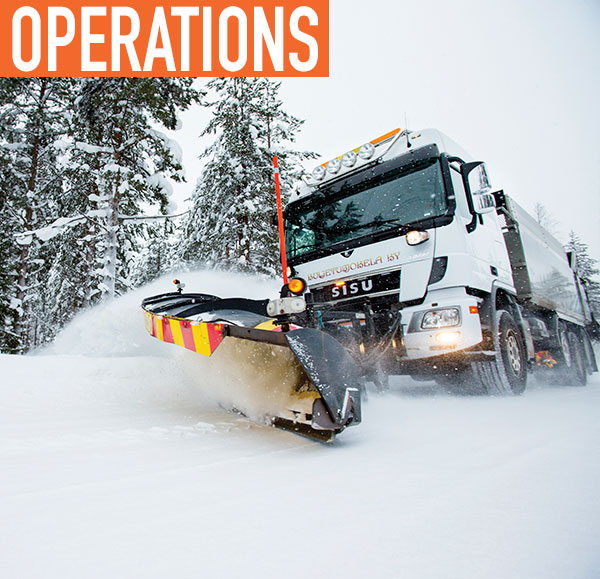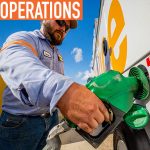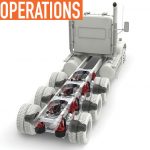It doesn’t matter if it’s January when a blizzard cripples the northeastern United States, August when a hurricane slams into the southeast, or November when a dry-season wildfire roars across southern California. Communities must be prepared to respond to emergencies.
When a large-scale disaster strikes, can your state or local community:
Reliably respond with trucks and other heavy equipment that run on proven engine and fuel technology?
Meet emergency preparedness requirements, even during long disruptions to fuel supplies?
Reduce dependence on non-renewable fuel sources while lowering emissions and costs for engine maintenance and repairs?
Most states and local communities cannot answer yes to all three of these big questions. The reason: As many as 98% of fire trucks, ambulances, and rescue vehicles in the United States are powered by conventional petroleum diesel. So is nearly every tractor-trailer rig that hauls cleanup equipment and relief supplies, including food and water, as well as almost all the utility trucks crews drive to restore electricity, natural gas service, sewer pipelines, and drinking water.
DIESEL PROBLEMS
Disaster response plans throughout the country depend on petroleum diesel, but there are inherent risks to fuel availability that may be disrupted by decimating disasters. For example, according to the US Office of Energy Efficiency and Renewable Energy, in 2017, Hurricane Harvey knocked out nearly 30% of the nation’s refining capacity. The US Department of Energy states that in California, where an earthquake occurs every four days on average, there are 20 refineries, 130 petroleum terminals, and 71,280 miles of pipeline at risk. Even thunderstorms and lightning, the leading cause of natural disasters in California, could interrupt the manufacturing and distribution of diesel.
In the aftermath, refineries can remain offline, pipelines can be damaged, and power outages can last for extended periods. Such scenarios leave emergency workers unable to fill up their trucks, bulldozers, and other heavy-duty equipment and present new obstacles to emergency responders attempting to assist their communities. That’s why leaders of the US Office of Energy Efficiency and Renewable Energy and the National Association of State Energy Officials are among those encouraging state policymakers and local emergency preparedness directors to diversify their response plans and include petroleum diesel alternatives such as batteries, hydrogen, natural gas, propane, and biomass-based diesel. This move also supports the push to reduce dependency on non-renewable fuels and promote cleaner, sustainable solutions.
However, random adoption of alternative fuels does not automatically enable communities to answer yes to the trifecta of questions concerning disaster preparedness. Some alternatives are not as commonly available as petroleum diesel and more prone to disruption. Let’s look closely at what that could mean for your community’s safety and budgets.
LIMITING ALT FUELS
Battery power has recently received an increasing amount of media attention. Electric vehicles tout the promise of eliminating tailpipe emissions, but fleets must invest in expensive, new vehicles. Since government agencies and utility companies share resources and often travel long distances to render mutual aid to one another during crises, the ability to refuel by charging along the route is critical. Emergency response teams must invest in new charging infrastructure at their home bases and a network of remote charging stations between cities that currently does not exist.
The capital requirements to buy new equipment and maintain fueling facilities also limit use of emergency vehicles powered by other alternative fuels such as hydrogen, natural gas, and propane. Emergency planners must balance the guarantee that vehicles, including evacuation buses, can keep running far from their home bases.
Despite these considerations, local communities continue to face growing pressure to achieve sustainability goals and improve air quality. Fleet managers haven’t stopped converting existing vehicles or purchasing new vehicles designed to run on alternative fuels. Doing so with the wrong alternative fuel, however, can come at a cost to the public.

THE SOLUTION
There is one alternative to diesel that does enable emergency response planners to answer yes to all three of the big preparedness questions.
Renewable diesel is a premium-quality, non-petroleum hydrocarbon fuel made from 100% renewable and sustainable raw materials. Every molecule in renewable diesel is found in petroleum diesel and meets the industry and legal diesel standards. That makes renewable diesel an attractive alternative fuel solution that can be swapped into diesel supplies and used in existing vehicles and distribution infrastructure with no changes or modifications. With renewable diesel, emergency responders can travel far beyond their home base and find a sustainable source for refueling. Fleet managers can make a responsible choice—from both a renewable content and an emergency preparedness perspective—without a large capital expense.
One fuel alternative for emergency vehicles, Neste MY Renewable Diesel™, provides many added benefits:
• More power—ensures quicker cold starts, less noise, and better throttle response with its 75 to 85 cetane number.
• Cold-weather performance—chemically engineered for a -4-degree Fahrenheit (-20-degree Celsius) cloud point to avoid gelling, even in arctic temperatures.
• Long-term storage—inhibits water accumulation, which can promote microbial growth and deteriorate fuel quality.
• Lower maintenance costs—burns clean to keep filters clear and vehicles running efficiently.
• Fewer emissions—cut greenhouse gas emissions by up to 80%, according to the US Environmental Protection Agency.
• No odor—contains no aromatics, so emergency responders are not exposed to foul-smelling fumes, especially when engines idle for long periods.
Now, forward-thinking cities are replacing petroleum diesel with Neste MY Renewable Diesel. Among those to do so recently are two in California:
Beverly Hills uses Neste with its entire 99-vehicle fleet, including emergency vehicles.
San Leandro uses Neste with all 160 municipal vehicles, including emergency vehicles and construction equipment.
INCENTIVIZE
1 First responders have been among the last to try new engine and fuel technologies because emergency response services depend on their trucks and other equipment to quickly start and keep running in an emergency.
2 As a result, only a small number of emergency response vehicles in the United States run on alternative fuels. Many are dual-purpose trucks—such as those that can haul garbage and also plow snow; or commuter buses with the capability to evacuate residents before and after a natural disaster.
Throughout the United States, there are limited sustainability mandates, carbon credits, or tax incentives focused on emergency alternative fuel solutions. States and local communities should renew their focus on policies to encourage diversification of fuel sources to meet all emergency preparedness requirements, achieve sustainability and air quality goals, and maximize the investment in diesel trucks and other vehicles that communities already own.
Neste MY Renewable Diesel already enables communities to increase disaster preparedness with a proven, cost-effective, and sustainable alternative fuel. Neste MY ensures fire trucks, ambulances, and other vehicles deliver emergency workers and supplies when and where they’re most urgently needed, 365 days of the year.
ABOUT THE AUTHOR
Dayne Delahoussaye is the head of North American public affairs at Neste. He works closely with legislators and energy stakeholders to provide sustainable, advanced low-carbon fuels. Find out more, visit www.nestemy.com.
MODERN WORKTRUCK SOLUTIONS:
OCTOBER 2019 ISSUE
Did you enjoy this article?
Subscribe to the FREE Digital Edition of Modern WorkTruck Solutions magazine.





